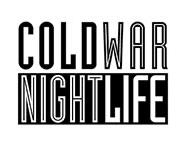Everything about Mark Stewart was big. He sang with a big voice about big topics over big beats. The passing of The Pop Group vocalist left a big hole in a scene over which he had the biggest influence.
Whether railing against consumerism or oligarchy, Stewart’s uniquely melodic rants were a merciless hammer. Even his tender, vulnerable love songs were a solid anvil. Between them, the furious energy of punk was turned into the hardest of rhythms.
Two years after Stewart left the dancefloor, Mute have revealed a final solo album. The first single from The Fateful Symmetry, “Memory of You,” was coproduced by Youth and features the backing vocals of Hollie Brook.
Laden with strings and a tense pulse, the track functions as a taut riposte to “Fade to Grey” with Stewart at his most earnest. “Could have wrote a love song,” he notes, wryly, but intelligence sources intrude. It is a conspiracy of longing.
The album is out on 11 July 2025. On the evidence of this track, it should be – must be – will be – big.
